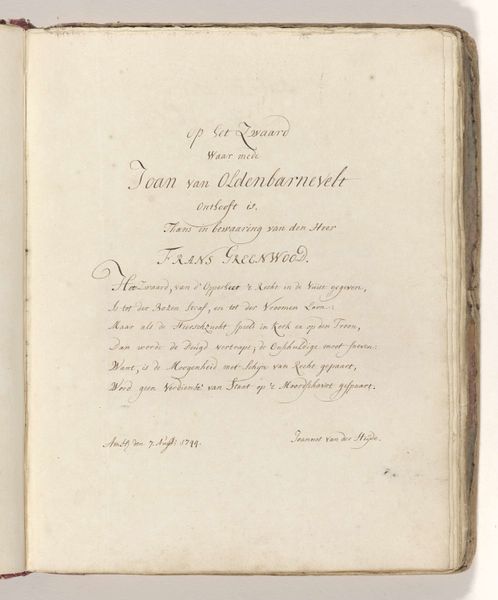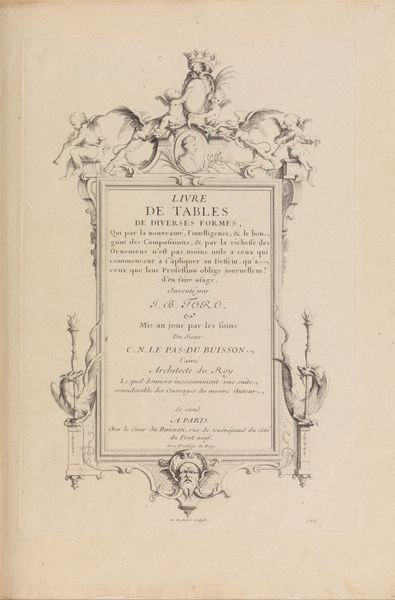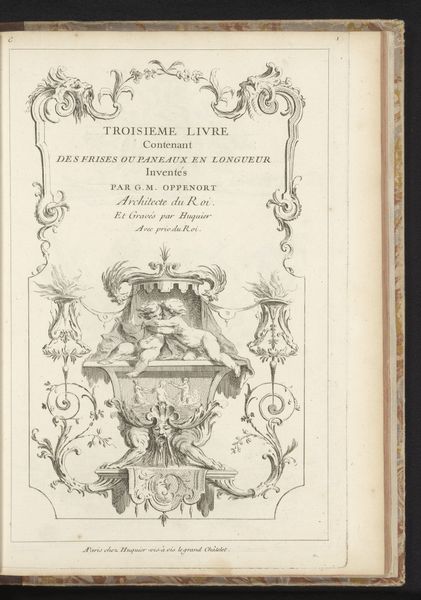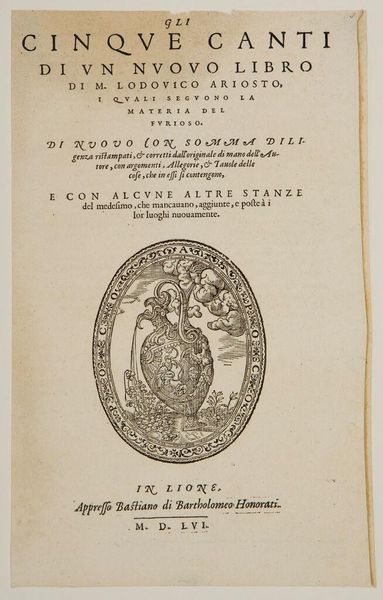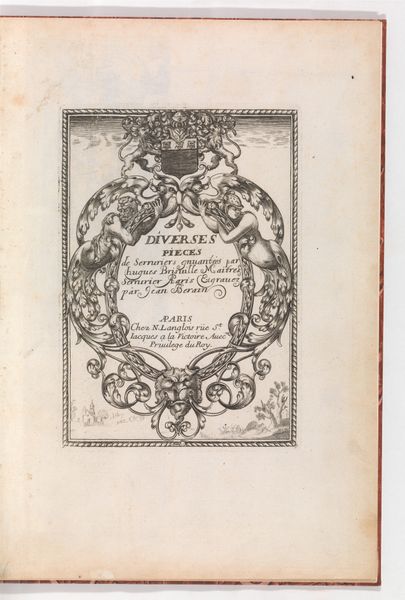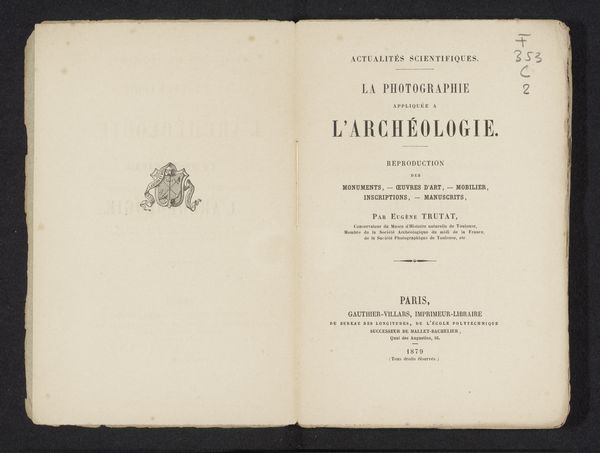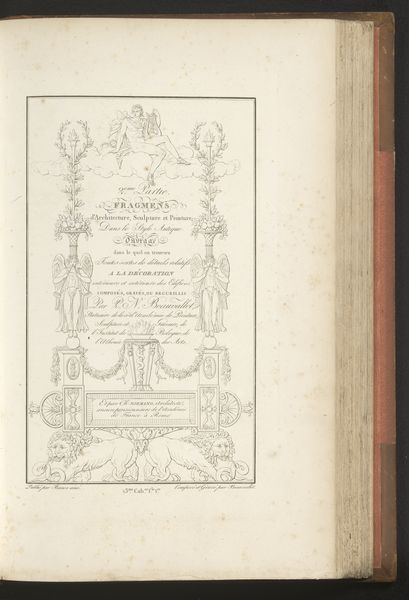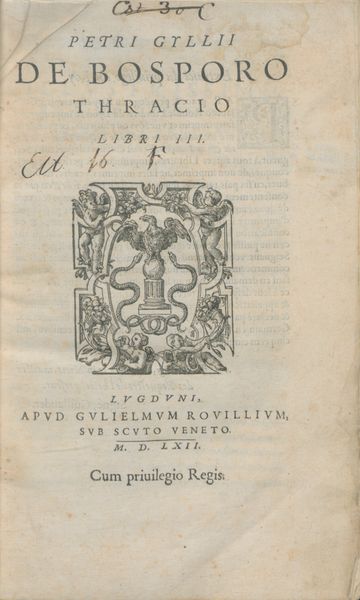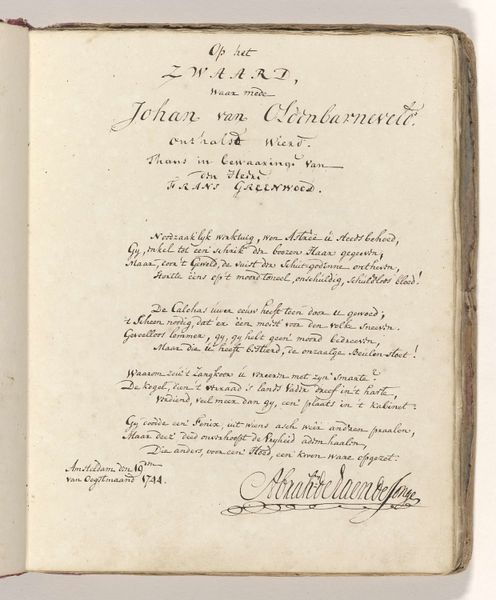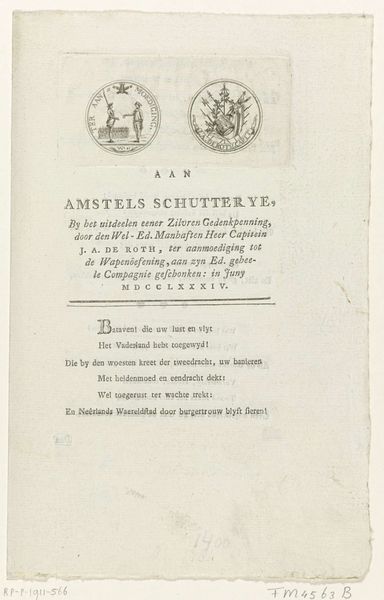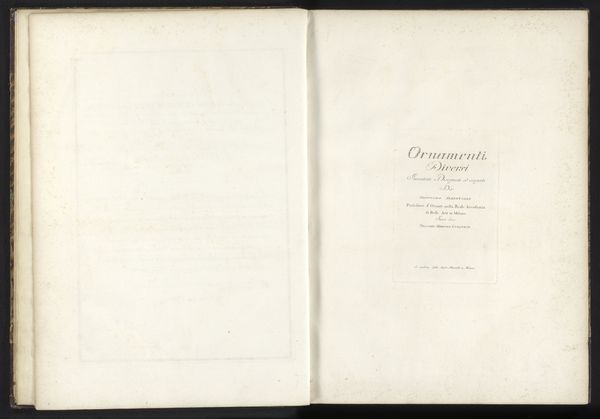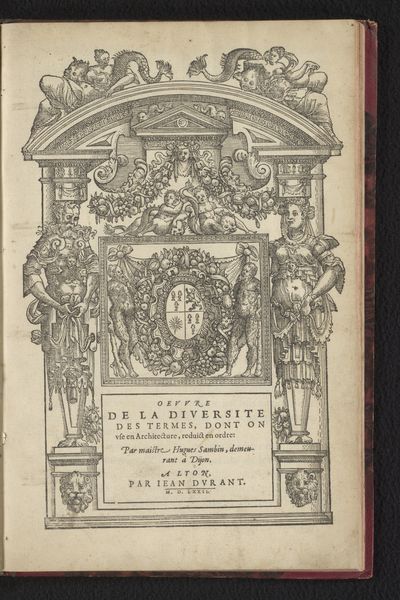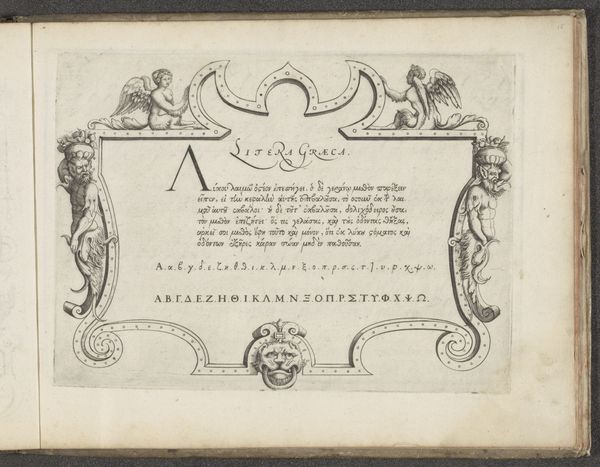
Titelprent met het wapen van Augustus II de Sterke, koning van Polen 1754
photo of handprinted image
aged paper
homemade paper
pale palette
ink paper printed
parchment
light coloured
white palette
soft colour palette
watercolor
Dimensions: height 302 mm, width 218 mm
Copyright: Rijks Museum: Open Domain
Curator: This is Johann Anton Riedel’s "Titelprent met het wapen van Augustus II de Sterke, koning van Polen," created in 1754. The print presents the coat of arms of Augustus II. Editor: My first impression is of aged elegance, but also a sort of faded grandeur, if that makes sense. The delicate linework against the parchment color feels refined but…powerless, somehow? Curator: Right, the materiality speaks volumes. This is an ink-printed image on paper, likely homemade, and you can really sense the texture and the age in the physical artifact itself. It really straddles the line between practical document and high art. Consider the labour invested in crafting both the paper and the printing process itself. Editor: I agree, it is fascinating to think about the layers of meaning here. It’s ostensibly a symbol of power – the coat of arms of a king – but made accessible through print. This brings up the questions of distribution, viewership and the ways in which the imagery surrounding monarchy was consumed in the 18th century. Curator: And who exactly was doing the consuming? Prints like this, due to their reproducible nature, circulated widely, contributing to an early form of mass communication and even shaping popular perception of rulers. Its light-colored palette and fine lines do create an aesthetic impact that softens the symbolism. It shifts from aggressive propaganda to refined document. Editor: Precisely! Think of the societal implications. What did it mean for ordinary people to have access, visually at least, to these symbols of power? Were they merely passive recipients, or did they engage with and perhaps even critique the figures and ideologies these crests represented? Curator: It is also significant to note the process that went into this edition; its textures and process indicate labor practices beyond just the immediate artistic composition. We must consider what kinds of resources, craftspeople, and production standards were mobilized to create even a single print like this one. Editor: Riedel’s work makes me think about the way art can both reflect and actively shape social hierarchies. I am struck by how seemingly simple objects like this can act as conduits for such complicated political and social messages. Curator: Agreed. Looking closer reveals the subtle power dynamics embedded in what at first glance just seems like a historical curio. Editor: Definitely gives a renewed appreciation for this understated, yet undeniably fascinating print.
Comments
No comments
Be the first to comment and join the conversation on the ultimate creative platform.
